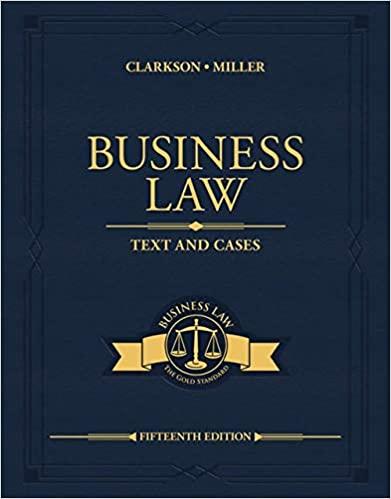Question
Reply to this discussion post: Facts The case concerns William Hough, a prisoner in the Western Penitentiary in Pennsylvania, who filed an action against numerous
Reply to this discussion post:
Facts
The case concerns William Hough, a prisoner in the Western Penitentiary in Pennsylvania, who filed an action against numerous officials, among whom is James F. Maroney, the superintendent of the institution. Under the Civil Rights Act, Hough alleged that his constitutional rights had been violated. He asserts that, following his accusations and complaints against the prison administration, made with the purpose of correcting abuses and improving prison conditions, he was unjustifiably put in solitary confinement as a form of punishment and without due process.
Issue
The major legal question in this was whether keeping an inmate in punitive confinement for 30 days without a disciplinary hearing was a violation of the Due process clause of the Fourteenth Amendment.
Holding
The court held that Hough's four-year placement in solitary confinement without a hearing did not deprive him of any rights guaranteed by the United States Constitution, because the administrators had discretion to decide that solitary confinement was necessary for the safety and security of the penal institution.
Reasoning
The Supreme Court concluded that while prisoners do not shed all constitutional protections once they are imprisoned, the due process clause does not require the courts to fix the prison administrators standard of just treatment, nor does it require prison officials to set up and follow procedures nor does it mandate the gravity of their policies. It was held that the prison administrators had broad discretionary powers over their inmates and their concerns for them and their staff allowed them to respond to petitions, needs, and requests.
Conclusion
The court ruled that putting him in solitary was an administrative action needed to maintain order and that it didn't need a hearing before. It did not violate his rights under the 14th Amendment.
Step by Step Solution
There are 3 Steps involved in it
Step: 1

Get Instant Access to Expert-Tailored Solutions
See step-by-step solutions with expert insights and AI powered tools for academic success
Step: 2

Step: 3

Ace Your Homework with AI
Get the answers you need in no time with our AI-driven, step-by-step assistance
Get Started


